The search for Windows 7 updates takes a very long time. What to do if Windows is endlessly searching for updates. Installing the package and manually searching for updates
In Seven, such a malfunction can most often be encountered after a clean installation of the system. Upon attempt update in the Update Center - this is not immediately possible.
The process can go very for a long time and one gets the impression that the system does not search at all, or does it for an infinitely long time. 
Using the official fix
Based on the bit depth of the installed system, you can download a special one on the official Microsoft website patch KB3102810, which is intended specifically to eliminate this problem.
For Windows 7 x86(32 bit) any version. 
For x64(64 bit processors). 
Loading, launch installation. However, this method does not always help, so we move on to the next one. 
If the update didn't help
You can resort to searching for a solution to the problem specifically for your type of error, or you can download standalone package Windows 7 updates – UpdatePack7R2. 
The description describes the functionality of this package, as well as a complete list of keys for installing the set. 
After downloading, right-click on the package file and select Create a shortcut.
Then right click on Shortcut – Properties.
In field An object next to the location address separated by a space we register keys. 
The keys indicate the installation of the IE11 browser, a completely automatic installation with a reboot upon completion.
Windows 8 endlessly seeks updates

If there is a similar problem in the Eight, the procedure is slightly different.
Cleaning the SoftwareDistribution folder
At first turn off Windows Update service. In the window Execute(Win+R) enter “ services.msc». 
We find the corresponding service, right-click - Stop.
Let's get started purification directory for storing installation files. To do this, either follow the path C:Windows/SoftwareDistribution/Download or enter it in the window Execute.
Delete all files. 
After that again launch service. 
Reboot and start searching for and installing updates
Automatic troubleshooting
Available on the Microsoft website utility solutions to similar problems 0x80240016. A utility called WindowsUpgradeDiagnostic automatically eliminates error. 
After downloading and running in the program window, click Further and wait for the diagnostic process to complete.


Upon completion of the diagnosis, a mark will be placed symbolizing correction Problems. 
Then, reboot the computer and manually launch search And installation in the Update Center.
We make corrections manually
You can try to troubleshoot problems using standard system tools.
Start – Control Panel – Troubleshooting.
Then select the first item in the field, as shown in the picture. 
The Update Center will launch, where after pressing the " Further» you can perform the procedure troubleshooting.
In the column Issues found Green ticks indicate that there are no faults.
Reboot and try to update the system again.
Windows 10 won't update via Update
This is what this error looks like in the top ten. 
The arrows in the picture show the order of steps for Running the Update and Security settings.


IN additional parameters The instructions strongly recommend turning on automatic mode.


Computer Troubleshooter
Troubleshooter here starts And customizable in an identical manner as was shown earlier for the figure eight. Therefore, we provide a list of step-by-step pictures of performing the required actions.
At this stage the system will ask us permission to apply the correction, to which you should answer in the affirmative by selecting the appropriate option.
After this you will receive report about the corrections made. 
Enable or restart the update service
We start the system service - turn on service responsible for updates. If it is already enabled, you can try restarting it.



Using a script
Another way to solve the problem is reset parameters update center automatically using a special script.
The script describes the procedure for disabling the update service, resetting parameters and starting it back. In addition, the SoftwareDistribution update center service directories, downloader, and catroot 2, are renamed to catrootold, and their backup copies are created.
To use the script enter commands into a clock editor like Notepad and save it with an arbitrary name (in the example “winupdate-reset”) and the extension “.bat” with ANSI encoding.


Then it will be enough just run received file from administrator name, press any key and wait for the parameters correction procedure to complete.


Press any button again and reboot computer.
This method can work on systems versions 7, 8, 8.1, 10.
Of course, there can be many reasons for this problem. The most effective ones in such situations are discussed above. If they didn't help, we advise look for a solution on the Internet for a specific error code in order to figure out what exactly happened.
Problems may be due to firewall settings, caused by blocked proxy server ports, viruses lurking in the system and many other reasons. In each case, based on the error code, you should approach it individually. Alternatively, you can roll back the system to the restore point when there were no problems with the installation.
Although updates, at first glance, do not bring anything negative for the average computer user in terms of security, they introduce additional functions that are very necessary for the operation of many programs, therefore installing updates is extremely necessary and recommended.
Problems with updates can definitely arise at inopportune moments. Moreover, there are a number of reasons for this, so we advise you to study the manual better!
Today this software is a little outdated. However, the popularity of the OS in question is still high. This article will tell you why Windows 7 won't update through Windows Update and how to fix the problem. Below are a number of methods.
Why are updates needed?
But first you need to understand what these updates are for and what role they play for the user:
- the product ensures the integrity and security of the OS;
- the update ensures compatibility with improved machine spare parts;
- software optimizes program code;
- The fix improves the performance and multitasking of the OS.
What updates are there?
All software components are divided into several types:
- important;
- recommended;
- optional;
- other updates.
Important updates are related to Windows system security. It is recommended to install such packages from the moment they appear in notifications. Recommended components will improve PC performance. Optional components include various drivers or updated software from developers. Others include those components that are not included in the above.
The OS distribution will not be reconstructed in the future, since Win 8 and then 10 were released. Developers will only support a special number of tools. Fans of the presented version still have a lot of time left.
Why are OS updates not installed?
Today, this may be due to the following reasons. Before you do anything, you should definitely leave the option of backing up your data with a subsequent system restore point. Otherwise, the system may not start up and the user will lose important data. That's why:
- we will create a point for rolling back the OS;
- or we will create an image for backup using native tools - the Win 7 archiver;
- or we will use third-party software and create a similar copy in it.
Incorrect installation
Often, incorrect installation is hidden in an error in starting the “Update Services”. To enter the settings parameters, just launch the “Start” menu and enter “Services”, after which a dialog box will pop up with the configuration of the parameters.

The dialog box displays a list of local OS tools. In the list, we will find “Windows Update”. The list is displayed in alphabetical order, which means that the required element will be located at the very bottom. Click twice.

In some cases, the service tool is running offline. It also happens that the problem depends on the startup itself. It's worth checking if the service is running. This is most often observed on illegal (pirated copy) builds of the Win 7 distribution. Software makers turn off the service on purpose. So let's make sure that the local tool is enabled. If not, then turn it on.

The enabled OS update application should be turned off.

Without leaving the dialog box with properties, press the Win + R combination on the keyboard, after which the “Run” system window will pop up, where we will enter: SoftwareDistribution and click “OK”.

The OS Explorer will start with the subsystem folder “SoftwareDistribution” from which you will need to delete all existing folders and files.

Now let's go to the window with the Win 7 local tools configuration parameters and restart this element again.

After this operation, you will need to restart your PC and go to the Update Center.

When the working window opens, download the updates and install them. To quickly enter the configuration settings, you will need to call the Start menu and enter the desired service name in the search. In the dialog box, select the “Check for updates” option.

Install the required update package by clicking on the option of the same name.

When you need to install only special updates, you will need to click on the “Important updates” option.

Among the expanded list, let's tick off what we need.

Upon completion, return to the initial window of the service and enable the installation option.
Errors while downloading updates
One of the most common problems with the Win 7 update is a failure during downloading to the PC. This happens because the files are located and loaded into the OS cache. If the download is unsuccessful, the installation process will not be possible. It is worth considering that at the stage of downloading files, the update package will not be overwritten. Initially, you will need to uninstall the disk space containing the cache contents in which erroneous updates are stored and only then download the components.
To clear the cache, open the command line. In the Start menu search dialog box, enter the corresponding query - “Command Prompt”. Then, call the context menu and run it with administrator rights.

In the Windows command line you must enter the following combinations:
net stop wuauserv
ren %windir%\SoftwareDistribution SoftwareDistribution.OLD
net start wuauserv

Click "Ok". After the cache is cleared, we will proceed to updating the system, after restarting the PC.
Errors in the system registry
Most often, errors when installing OS updates occur due to a failure - 80070308. This happens due to the fault of the system registry. To return the system to its original appearance in the registry, a number of changes must be made. Press Win + R. The Run dialog box will pop up. In the field, enter: regedit and click “OK”.

Go to the HKEY_LOCAL_MACHINE section and select the COMPONENTS subfolder in which we will delete the PendingRequired. To delete a system file, open the context menu by right-clicking.

After the operation, we will restart the PC and manually install updates.
Fix It - automatic solution to OS problems
To make it easier for users to troubleshoot such problems, Microsoft has developed special Fix It software. It will automatically eliminate all possible errors with the OS. The utility can be downloaded from the link below.
Let's run the program installation file. The software will automatically create an OS restore point. After the above operations, detection and elimination of system errors will begin. After the program is running, close the utility and try to install the updates again.
What to do if there is no access to the Internet and the connection to the Microsoft site is blocked by an antivirus or firewall?
If there is no connection to the Internet, and this is usually a problem with proxy servers or the lack of the Internet itself, the download of updates will not start. If the problem is with the antivirus or firewall, then during installation you should disable them and manually install the appropriate updates.
Impossibility to update due to lack of memory
It is regularly impossible to install updates for the Windows 7 operating system due to the lack of free disk space on the hard drive of a personal computer or laptop. Please note that most often the average volume of updates takes up to 5 gigabytes. Before downloading and installing, you will need to free up the occupied disk space on drive C and repeat the entire process again.
Long search for updates
Recently, when installing a clean image of Win 7 OS, it takes a long time to search for updates. In this case, no errors are observed. The problem is solved as follows:
- install Microsoft Fix It and reboot;
- restart the PC and install KB3102810 (links are given below!);
- We reboot again - everything should be fine.
This may be the reason why Windows 7 is not updated through the OS Update Center. This completes the entire troubleshooting phase. We will be glad if the information helped you. You can rate the article and write a comment! Share this tip with your friends. Thank you!
Some Windows 7 users are experiencing problems with the standard Update Center operating system. Windows 7 searches for updates endlessly, cannot download them, and continues to look for others.
A problem like this can cause a lot of trouble. Firstly, the latest patches will not be installed on your computer, which may reduce work efficiency OS. Secondly, while the search is ongoing, CPU and physical memory are heavily loaded. This may not be very noticeable on powerful PCs, but on “weak” ones it is very unpleasant. This article describes what to do if Windows 7 Update can't complete searching for updates.
Setting up automatic search
Firstly, you need to completely disable Windows update, which loads the operating system as it goes on forever. Subsequently, you will be able fix the problem and activate it back, if you want. But even without updates, Windows still works stably. Many users disable them on purpose and do not experience any problems.
You will need to do the following:
This is followed by to restart a computer to stop searching. Now your system will not try to search for new updates. If you need to enable this function, you can do this in the same menu.
Stopping a service
In some cases, the above method may not work. For example, when you try to reboot, the computer will spend a long time trying to download and install some kind of patch. And after turning it off and on manually, all settings return to their original state. And accordingly, the endless search for Windows 7 updates will begin again. To fix this problem, you need completely disable the service responsible for the work Update Center.

After these steps, the search for updates will be completed. To run it, you need to return the service configurations to their original state.
In some cases, stopping the service and starting it again may solve the problem. Try this before resorting to more complex methods if your computer takes a long time to search for new patches.
Correcting errors in system files
Often such problems arise as a result damage to important system files. This may occur as a result system failures, actions of virus programs, incorrect installation of previous updates and so on.
In Windows OS there is special utility, with which you can automatically find and correct such errors. It does not have a GUI, so users need to launch the system command prompt to use it.
This is done as follows:

If you want to copy this line, you must use the context menu by right-clicking inside the window. The Ctrl + V combination in the console does not work.
After that Windows will scan all system files. All detected errors will be corrected. After this, you should restart your computer and start searching for updates again. If the process is still too slow- need to search other ways to solve the problem.
Microsoft has released special update for their operating systems, patching Windows Update, which endlessly searches for updates. Download links are located on the official website of the developer, so you can download the patch without resorting to services Update Center.
- For owners 32-bit version Windows - https://www.microsoft.com/en-us/download/details.aspx?id=49542
- For Windows with 64-bit architecture - https://www.microsoft.com/en-us/download/details.aspx?id=49540

You need select the interface language of your OS and click on the red Download button. Then just run the downloaded file, wait for the installation to complete and restart your computer. In most cases, this patch solves all problems that arise.
Updates KB3020369 and KB3172605
If the previous solution did not help, then you should update the seven by installing two more updates, rebooting the computer between their installations. This method was suggested by several of our readers and it really helps.
Microsoft Troubleshooter
Another way to solve the problem is to use the Microsoft Troubleshooting Tool. Its action is somewhat similar to “sfc /scannow”, with the difference that it was created specifically for Update Center and can solve a significantly larger number of problems. Besides, it has a graphical interface, which makes it easier for users unaccustomed to working in the console.
Do the following:


Wait until the operating system scan is completed. If the utility detects any problems, it will report it and automatically apply fixes.
We hope this article helped eliminate the endless search for updates to the seventh version of Windows, significantly speeding up your computer and making it much more stable.
Video on the topic
Some Windows 7 users may encounter problems with the standard OS update center. This utility can constantly search the Internet for new system updates. And having found the necessary file with the update, for some reason it cannot download it.
Sometimes it also happens that through Windows 7 Update, the search for updates takes an infinitely long time, but then the process ends. Then, for some unknown reason, the software stops downloading the update halfway and starts looking again for other similar files with system updates.
This software bug can have a bad impact on the operation of the entire OS, both in terms of its efficiency due to the lack of updating important Windows components, and in the speed of the PC’s response to user actions, because the constant search for updates will reduce its performance. On powerful devices this problem is not so noticeable, but on budget computing devices it can become quite a significant nuisance.
It is worth noting that this update problem can be easily fixed by yourself, and this article is intended to reveal several simple ways to do this without damaging the Windows 7 x64 / x32 operating system.
How to set up automatic search?
The first thing that needs to be done when an eternal search for a Windows OS update occurs is to disable the function in the system menu that is responsible for this action. If necessary, the search for updates can always be resumed. Although many users disable this function immediately when installing Windows on their computer, and the lack of updates does not in any way affect the stability of the system. To disable the update search feature, you must do the following:

After these simple steps, the OS will stop searching for updates and booting the computer. In the same menu, if necessary, you can restore the search.
Force stopping the Automatic Updates service
Sometimes the above method of disabling the update center may not work. Let's say that when you restart the computer freezes for a long time, because... it takes forever to find updates and can't download a new patch. And after forcibly turning it off and on, the previously set settings for automatic search may return to their original state.
If such a problem occurs, then you need to disable the entire automatic update service. This can be done as follows:

After these simple manipulations, the search for updates will be stopped. If you suddenly need to start it, you will need to perform all the steps in reverse order. As a rule, this is a more effective method than the previous one, and disabling the automatic update service is enough to prevent the computer from attempting to update the system again without the user's permission.
Finding and fixing errors in system files
Quite often, such troubles with the constant search for updates occur due to the fact that one or another system file, or even an entire partition, has been damaged. This can happen due to a sudden system failure, or due to virus programs; or simply as a result of a previous OS update, new files were installed incorrectly, and now they simply do not work and do not allow the entire system to function normally.
Windows OS is equipped with a special service that monitors and debugs the system if it finds any problems in it. The utility does not have a colorful graphical interface, and to select it to work, you need to launch the command line. This is done like this:

Type "sfc /scannow" and press the "Enter" key to start scanning your computer for damaged files.

If you want to copy the entered command, you will have to select and save it through the context menu, since the well-known key combination via “Ctrl” does not work here.
If everything was done correctly, the OS will scan system files and, if any errors are found, will try to fix them. When the scanning is completed, you need to restart the computing device and start searching for updates again. If the system gets stuck again, then we need to look for other ways to solve this issue.
Update KB3102810
To fix errors that cause the system to take too long to load, Microsoft specialists have released a special update. It can be downloaded from the official website of the corporation. Below are the official links to download this module for Windows 7:
You just need to select the interface language of the operating system preinstalled on your computer and click on “Download”. When the file download is finished, launch this application and reboot the device. In 90% of cases of incorrect loading of the Windows 7 operating system, this utility helps fix this annoying nuisance.
Error correction utility
You can also try the following method to troubleshoot system boot problems. Use a small utility to find and fix bugs from Microsoft specialists.
The principle of operation of this application is largely the same as the work on fixing errors using the command line and the “sfc /scannow” command. The only difference is that this small utility was written by developers specifically for Windows Update and has extensive capabilities for solving problems with the system. It also has a convenient graphical interface, which will make it easier for users who are not accustomed to the console to work with it.
We carry out the following actions:


The utility will begin scanning the OS for problems with system files. If the application finds any problems, it will report this in a pop-up window and automatically correct all errors found.
Conclusion
This article is intended to help you fix the problem on your own if there is an endless search for updates through the Windows 7 update center, and also to fix the incorrect loading of this operating system. If the article helped you in eliminating this annoying problem, you will be happy to rate the article positively and leave a comment. Share a link to this material with your friends who have similar problems. Thank you!
Some Windows 7 users are experiencing problems with the standard Update Center operating system. He is constantly looking for new updates, cannot load them, and continues to look for others.
A problem like this can cause a lot of trouble. Firstly, the latest patches will not be installed on your computer, which may reduce work efficiency OS. Secondly, while the search is ongoing, CPU and physical memory are heavily loaded. This may not be very noticeable on powerful PCs, but on “weak” ones it is very unpleasant. This article describes what to do if Windows Update can't complete searching for updates.
Setting up automatic search
Firstly, you need to disable endless search, which loads the operating system. Subsequently, you will be able fix the problem and activate it back, if you want. But even without updates, Windows still works stably. Many users disable them on purpose and do not experience any problems.
You will need to do the following:
This is followed by to restart a computer to stop searching. Now your system will not try to search for new updates. If you need to enable this function, you can do this in the same menu.
Stopping a service
In some cases, the above method may not work. For example, when you try to reboot, the computer will spend a long time trying to download and install some kind of patch. And after turning it off and on manually, all settings return to their original state. To fix this problem, you need completely disable the service responsible for the work Update Center.

After these steps, the search for updates will be completed. To run it, you need to return the service configurations to their original state.
In some cases, stopping the service and starting it again may solve the problem. Try this before resorting to more complex methods if your computer takes a long time to search for new patches.
Correcting errors in system files
Often such problems arise as a result damage to important system files. This may occur as a result system failures, actions of virus programs, incorrect installation of previous updates and so on.
In Windows OS there is special utility, with which you can automatically find and correct such errors. It does not have a GUI, so users need to launch the system command prompt to use it.
This is done as follows:

If you want to copy this line, you must use the context menu by right-clicking inside the window. The Ctrl + V combination in the console does not work.
After that Windows will scan all system files. All detected errors will be corrected. After this, you should restart your computer and start searching for updates again. If it still takes too long- need to search other ways to solve the problem.
Microsoft has released special update for their operating systems, which fixes the possibility of such freezes. Download links are located on the official website of the developer, so you can download the patch without resorting to services Update Center.
- For owners 32-bit version Windows - https://www.microsoft.com/en-us/download/details.aspx?id=49542
- For Windows with 64-bit architecture - https://www.microsoft.com/en-us/download/details.aspx?id=49540

You need select the interface language of your OS and click on the red Download button. Then just run the downloaded file, wait for the installation to complete and restart your computer. In most cases, this patch solves all problems that arise.
Microsoft Troubleshooter
Another way to solve the problem is to use the Microsoft Troubleshooting Tool. Its action is somewhat similar to “sfc /scannow”, with the difference that it was created specifically for Update Center and can solve a significantly larger number of problems. Besides, it has a graphical interface, which makes it easier for users unaccustomed to working in the console.
Do the following:


Wait until the operating system scan is completed. If the utility detects any problems, it will report it and automatically apply fixes.
Clearing the update cache
To do this, open the command line (cmd) as administrator and write one by one:
net stop wuauserv
ren %windir%SoftwareDistribution SoftwareDistribution.OLD
net start wuauserv 
And finally, the last step in solving error 0x8024402c - Delete the files in the Windows\SoftwareDistribution folder. Actually, this was done in the third solution to the problem, but there the folder was renamed to SoftwareDistribution.OLD, and a new one was automatically created, and here the action is similar, but simply with clearing the contents without any renaming.
What I actually did was delete everything that allowed me to delete it from the SoftwareDistribution folder. I rebooted without much hope, launched WindowsUpdateDiagnostic and lo and behold! It showed that error 0x8024402c was fixed and there were no more errors!
I rebooted the computer again, opened the update center, spent about 15 minutes “Searching for Windows updates...” and finally it gave me a list of updates asking me to download and install them.
 Working with Yandex Wordstat Yandex wordstat helper Yandex browser add-on
Working with Yandex Wordstat Yandex wordstat helper Yandex browser add-on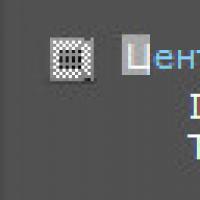 The processor is heating up, what is the reason?
The processor is heating up, what is the reason?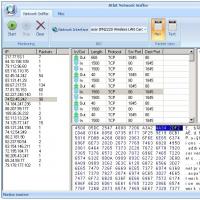 Windows network sniffer. Sniffers. Good intentions and malicious purposes
Windows network sniffer. Sniffers. Good intentions and malicious purposes How to add a contact to the blacklist
How to add a contact to the blacklist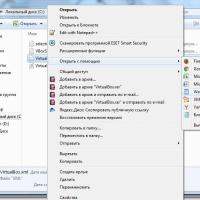 How documents from Rosreestr are opened
How documents from Rosreestr are opened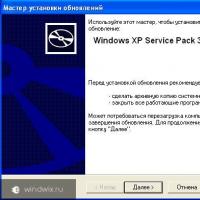 Receiving Windows XP updates after support ends
Receiving Windows XP updates after support ends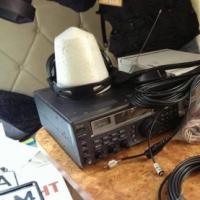 Phone wiretapping - the best spy software
Phone wiretapping - the best spy software